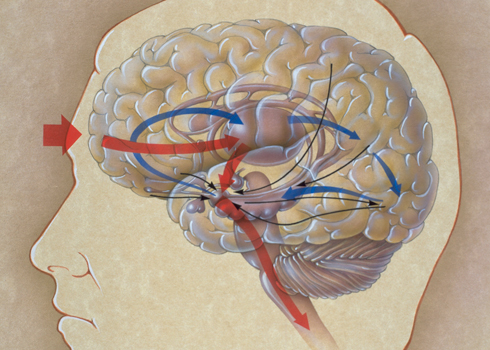People who have a large number of friends on Facebook tend to have more grey matter in portions of their brains than those with much fewer friends, British researchers have found.
Moreover, those with enlarged amygdalas, a region of the brain associated with emotions, tend to have more friends in the real world as well as virtual pals.
The scientists don’t claim to know what that means, but believe the findings are a start to understanding neurologically how humans relate to one another in a world that is increasingly knitted together by online social networks.
The puzzle is whether people with more grey matter got that way from friending on Facebook, or people who communicate with many others on Facebook do so because the enlarged brain regions.
The study is published in this week’s Proceedings of the Royal Society B.
The researchers from University College London, funded by the Wellcome Trust, examined 125 UCL students under an MRI device. All the students were active Facebook users with a median of 300 friends. Some had as many as 1,000.
They compared the brain scans with their network of friends, both online and in the real world and found enlargement in four areas: the amygdala, the right superior temporal sulcus, the left middle temporal gyrus and the right entorhinal cortex.
“The function of some of these areas seem to involve some aspects of how we behave with other human beings,” said Gearing Rees, one of the researchers.
The students with enlarged amygdalas had large numbers of both Facebook and real friends. Those with enlargements in the other areas had more friends in the virtual world, but not necessarily in reality.
The researchers then repeated the study with 40 more students with the same results. According to Rees statistically, the odds of this being by chance are less than one in a thousand.
The superior temporal sulcus helps us look at where others are gazing and gives us cues about others’ emotions. Defects there are associated with some forms of autism.
The medial temporal gyrus is activated when other people look at us and also helps us react to social cues. The entorhinal cortex is linked to memory and navigation.
Rees said the most plausible explanations for the increased grey matter are either people with expanded grey matter are hard-wired to be more social and this is reflected in the Facebook numbers, or the grey matter grew because of the socialization. It’s known for example, that learning new motor skills, such as juggling, can increase grey matter.
“It could be either way,” Rees said. “We cannot tell which of the two to believe.”
The topic of whether social networks and computer games are harmful is particularly hot among scientists in Britain.
For instance, a prominent British neuroscientist, Baroness Susan Greenfield, caused a sensation in the media when she testified before parliament and said that social networking could produce a mind that is almost “infantilized, characterized by short attention spans, sensationalism, inability to empathize and [with] a shaky sense of identity.”
Rees and his colleagues said they had nothing in their study to support that theory nor can they judge whether what they found was good or bad.
“It is an aspect of how we live our daily lives,” Rees said.






